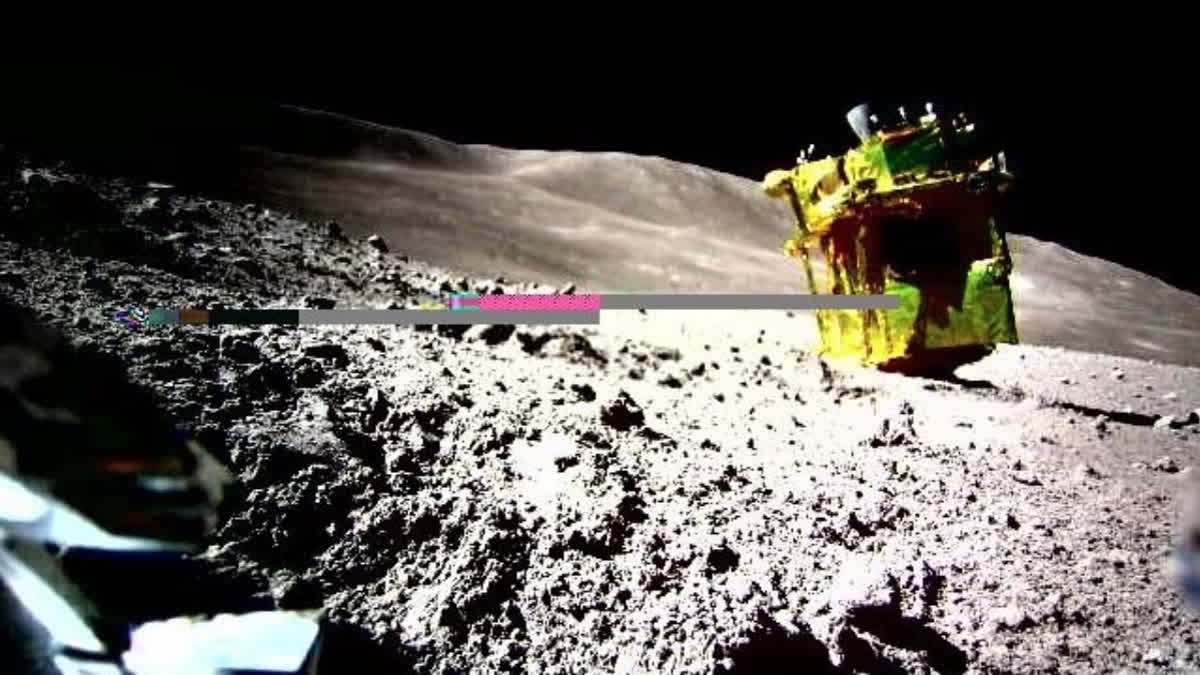Hyderabad: Japan’s space agency, JAXA Thursday announced that its first lunar mission hit the tiny patch of the moon’s surface it was aiming for, in a successful demonstration of its pinpoint landing system. However, the probe appears to be lying upside-down.
Japan's 'Moon Sniper' released the first image captured by the Multi-Band Camera (MBC) onboard the Smart Lander for Investigating Moon (SLIM) after the craft landed around 55 metres (180 feet) from its target, the country's space agency said.
However, things didn't go as per JAXA's plan when SLIM's handlers couldn't confirm its status immediately after touchdown and eventually determined that its solar panels couldn't generate electricity.
After a few days of data analysis, JAXA determined that the spacecraft landed about 55 meters away from its target, in between two craters near the Shioli crater, a region covered in volcanic rock. "SLIM succeeded in a pin-point soft landing... the landing point is confirmed to be 55 metres away from the target point," space agency JAXA said.
One of the lander’s main engines lost thrust about 50 meters(54 yards) above the moon surface, causing a harder landing than planned. A pair of autonomous probes released by SLIM before touchdown sent back images of the box-shaped vehicle on the surface, although it appeared to be upside down.
Japan became the fifth country in history to reach the moon when the Smart Lander for Investigating Moon, or SLIM, touched down on the Moon early on Saturday. But trouble with the probe’s solar batteries made it hard at first to figure whether the probe landed in the target zone.
SLIM is a demonstrator spacecraft designed by JAXA to showcase the technology needed to make super-precise planetary landings. It launched last September, along with an X-ray space telescope called XRISM, which settled into low Earth orbit.
The Smart Lander for Investigating Moon (SLIM) is one among the several recent lunar missions by governments and private firms, 50 years after the first human Moon landing. Two previous Japanese lunar missions, one public and one private, had also failed.
Read More



